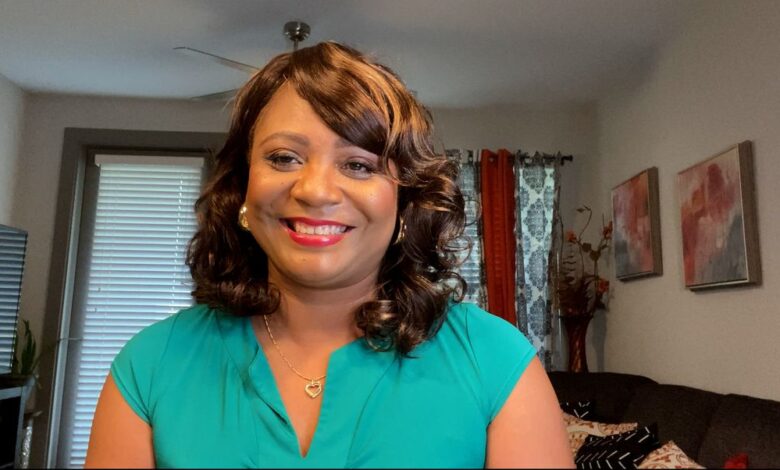This Brave Woman Has Faced Three Ovarian Cancer Three Times

For resources that may help you be more proactive in managing your ovarian cancer, visit NotOnMyWatch.com.
Each year in the US, approximately 22,000 women are diagnosed with ovarian cancer1. Unfortunately, the signs and symptoms of this disease are hard to recognize, so women often don’t learn they have cancer until it has advanced to later stages2,3. This is exactly what happened to GSK spokesperson Dana M.*, who shared her inspiring story with us in the video above.
Back in 1997, following a routine well-woman exam, Dana’s gynecologist recommended she get a sonogram of her abdomen. “He stated that he felt something that wasn’t quite right, so he wanted to be sure,” Dana recalls. When the sonogram showed there were masses in her abdomen, her ob/gyn told her she needed exploratory surgery to see what was going on.
A week later, Dana underwent the recommended surgery, but things took an unexpected turn. During the procedure, a gynecologic oncologist was called in to assist. When Dana woke up post-op, he was there waiting to speak to her. “I learned that I had masses of tumors growing within my abdomen and pelvic region. They were able to save my organs, with the exception of the one fallopian tube that had survived an earlier ectopic pregnancy, one ovary, my uterus, and my appendix,” Dana says.
A shocking diagnosis
A few days later Dana had a post-op visit with her doctor, where she learned that the tumors removed during her surgery were cancerous. Much to her disbelief, she was officially diagnosed with stage III ovarian cancer. The news was especially shocking because she was just 25 years old. Dana recalls, “In my mind, cancer was an elderly disease, not a young woman’s disease, definitely not this young woman’s.” The median age of a woman diagnosed with ovarian cancer is 632.
Although her doctors were able to cut away all the tumorous growth, her care team wanted to be sure no cancerous cells had traveled to other parts of her body. So Dana underwent chemotherapy. The treatment was successful and Dana’s health remained stable for over a decade.
When cancer returns
When she was 43, Dana learned the cancer had returned. This isn’t unusual for those with ovarian cancer. Approximately 85% of women with the disease will see the cancer return4. “I went through chemo…The tumors shrunk and were not a threat anymore,” Dana says.
Dana thought she was in the clear. But two years later, the cancer reared its ugly head again. This time, she was treated with chemotherapy every three weeks for almost a year. “It was the hardest time of my life. I was much older, so my body was slower to bounce back, not to mention my mindset being tossed everywhere by the news,” she remembers.
Another year went by. Then Dana had a cancer antigen blood test, also known as a CA-125. This led to additional tests including a computerized tomography (CT) scan and biopsy which confirmed her cancer had returned once more.
Finding a treatment option
Observation, or “watch and wait,” was the standard approach between Dana’s treatments, which she found challenging. “I have always been the person who takes life by the horns,” she says. So, when her oncologist spoke with her about maintenance therapy options that could potentially delay the time before the cancer returned following a response to chemotherapy, she was intrigued. “I liked the idea that I would have a medicine in my system that might help delay the cancer from returning after my successful chemotherapy cycles.” After discussing all the benefits and risks with her oncologist, Dana decided to try maintenance therapy.
Dana has been on maintenance therapy for several years now and has regular monitoring visits with her doctor. She also makes sure to tell her doctor about any side effects she experiences. “Knowing that I’m doing everything I can to actively support my own care…provides me that extra nudge to keep pressing,” Dana says. “I share my story as often as possible and do what I can to reach out to others facing a scary diagnosis.”
Learn more about Dana’s inspiring story and her goal to raise awareness about maintenance therapy in the video above. For more empowering information and resources visit NotOnMyWatch.com.
* Subject’s full name withheld to protect her privacy.
Trademarks are owned by or licensed to the GSK group of companies
©2021 GSK or licensor.
NRPWCNT210056
September 2021
Produced in USA.
REFERENCES
- American Cancer Society. Cancer Facts and Figures 2020. https://www.cancer.org/content/dam/cancer-org/research/cancer-facts-and-statistics/annual-cancer-facts-and-figures/2020/cancer-facts-and-figures-2020.pdf. Accessed August 2021.
- Schulman-Green D, Bradley EH, Nicholson NR, George E, Indeck A, McCorkle R. One step at a time: self-management and transitions among women with ovarian cancer. Oncol Nurs Forum. 2012;39(4):354-360.
- Recurrence. Ovarian Cancer Research Alliance (OCRA) website. https://ocrfa.org/patients/about-ovarian-cancer/recurrence/. Accessed August 2021.
- Lorusso D, Mancini M, Di Rocco R, Fontanelli R, Raspagliesi F. The role of secondary surgery in recurrent ovarian cancer. Int J Surg Oncol. 2012;2012:613980. doi:10.1155/2012/613980.
This content is created and maintained by a third party, and imported onto this page to help users provide their email addresses. You may be able to find more information about this and similar content at piano.io
Source link






